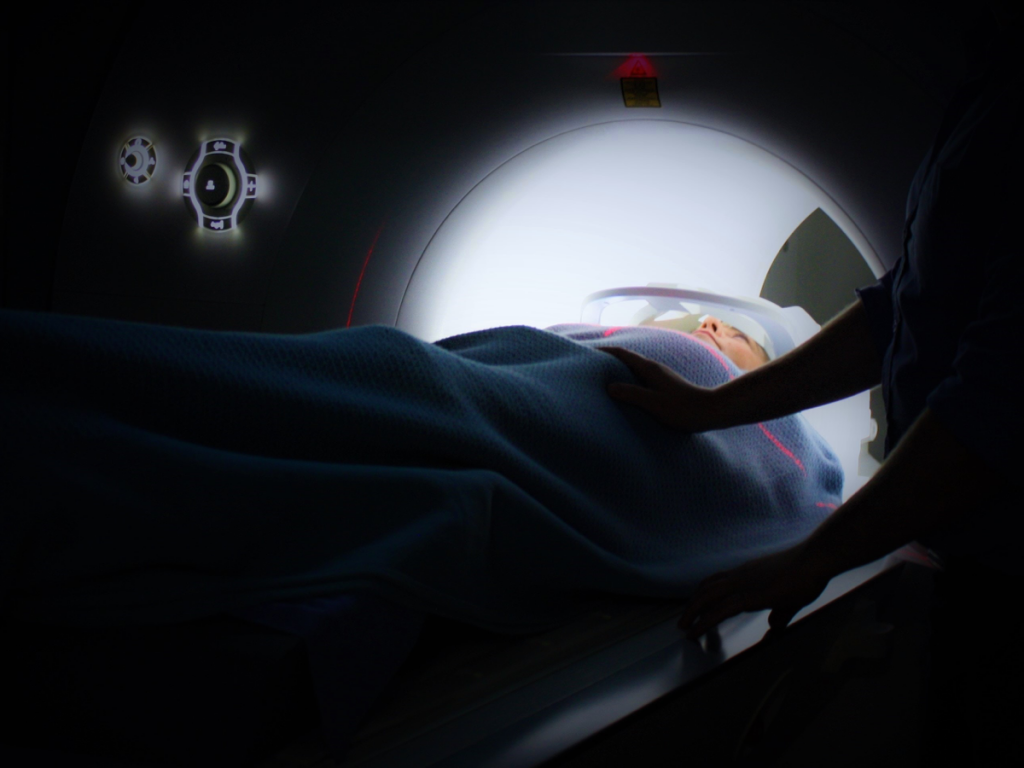Searching for a Fix for Persisting Pain

If you have ongoing pain, I bet you have had many people suggest they can “fix” your pain with medications, injections or surgery.
If you have persisting pain, you probably wish that they could!
Most doctors and health care providers genuinely want to help you. However, they often don’t have up-to-date information, especially about chronic pain. The science of understanding pain has made great leaps ahead in the laboratory. Unfortunately, much of this progress has not yet reached the clinic.
Before you say “yes” to any imaging or treatments, you need to know about the risks and benefits. It is a medicolegal requirement for your doctor to explain them to you, and check that you understand.
If you learn about pain and the science behind it, you might even come to know more about pain than your doctor. After reading this article, you will hopefully find that learning about pain is an important step for you to get better.
Staying Safe with Pain Treatment
The most important rule that doctors have to abide by is “first, do no harm”. It’s a fundamental medical principle that we keep patients safe from harm.
Unfortunately, many of the decisions that are made about your pain treatment are not up to date with the scientific evidence. Your health is at risk when you get incomplete information about what to expect. Poor treatment outcomes come from low quality or outdated research, or misleading advice about expected benefits.
If you don’t get the right information about your pain treatment, we have to ask, “how is this still acceptable informed consent in 2018?”

What Science Proves about Pain
You need to know that the best science tells us that experiencing pain isn’t proof that your body is “damaged”, but it does tell you there’s a perceived need for protection. Pain is trying to keep you safe. It is the output of various systems in your brain and body working together, and is produced by the level of danger or threat (but not necessarily harm!) detected, which is based on many inputs.
ALL changes that are seen on scans, like disc bulges and arthritis, are also seen in people with no pain or disability. For most people, these are pain-free and normal changes that your protective systems have adapted to. Certainly, they can contribute to pain, but they don’t have to be painful.
To make things even more interesting, you can have severe pain, with no detectable damage at all.What we see on scans and x-rays don’t have a clear link to causing pain. Very few people are reassured that such changes are quite normal. Having pain is not “normal”, but what we can see on your scans usually is.
Unfortunately, people are often quickly scanned and sent off to surgeons with a scary list of things “wrong” with their body. People come to believe these things need to be fixed to resolve their pain.
When you know that pain is a protective signal, it won’t surprise you to know that scans and visiting specialists can make your pain worse. Your protective systems go on to high alert when you’re told that you’re damaged and that the pain won’t go away until the damaged part is fixed.
Choosing Wisely for Scans and Specialists

How do we know that this science is correct? How can we be so sure that those changes you see on scans are not as scary as you’ve been led to believe?
There are many examples of research studies that show this. The international ‘Choosing Wisely’ program for back pain is a good example. Good science from the lab, about pain and what causes it, is used to help make decisions about having scans.
To put it simply, if there isn’t a bloody good reason to have your back scanned, DON’T!! If you haven’t had a fall, an accident, or “red flag” symptoms that your doctor will ask you about, you don’t need a scan. If you do, you are at a higher risk of a worse pain experience.
Having the scan itself is not somehow causing you more pain. The scary stuff that a scan can show and how it is described to you is what can cause more pain.
When your doctor tells you that a disc “bulge” or something similar is causing your pain, it can create more problems than having the bulge itself! The bulge may be causing no pain, but your protective nervous system can make pain if there’s a “good reason” to consider something should hurt. A scary scan is a good reason to hurt more!
What you need to know about Surgery

If you have changes on your scans and pain, your next stop is often visiting a specialist. An orthopedic surgeon or a neurosurgeon are common destinations for people in pain.
There are more ‘informed consent’ problems with this pathway.
Managing pain by ‘fixing’ things on scans is flawed logic. If you know that your scans show “normal” changes, and pain is not directly related to your scan outcomes, you should be asking questions.
Recent research has compared “real” surgery to “fake” surgery. In the study, some of the patients got surgical procedures to fix some damaged part of their body. Some received a “sham” surgery – they had an anesthetic and a small incision that was sewed up like a standard surgery would be, but the actual surgical procedure was not performed. These studies were done with surgeries commonly done on the knee, shoulder, elbow, and back.
So far, the “real” surgery hasn’t been shown to be better than the “fake” surgery. Patients do get better from the real surgery, but in the same numbers as people that think they have had the surgery
The surgery “works” but it doesn’t work at the level of fixing your body. It works because something very meaningful and important has happened (a sophisticated procedure done by a trusted medical authority), which changes your brain. Your protective systems become reassured that all is well. This reduces danger signals to your body, replacing them with ‘let’s get better’ messages, which translates to less inflammation, less protective behavior and less pain.
Imagine if you could do that without needing all the risks of an anaesthetic, the surgery itself and the cost of a hospital admission!
Telling the truth about pain
This really is the latest and best science.
How many people are told all of this before they accept the risks of surgery?
The sad reality is that the likely answer is almost none.
Even though this is common, it is unacceptable. This process, this ‘catch 22*’ in which scans and investigation increase pain and worry, and send people towards surgery, cannot possibly satisfy the requirements of informed consent and the ‘first, do no harm’ principle.
Shifting the Course of Pain Treatment

In 2018 it should be a basic requirement, and a fundamental consumer right that you understand your pain properly, and also understand the true risks and benefits of ‘fixing’ attempts with surgery and interventions.
This doesn’t just apply to the standard risks and complications from surgery. These risks are usually well explained. Instead, you need to know that the ‘this surgery can fix your pain’ approach is fundamentally unsound. I want you to be able to trust that your health professionals are doing their best for you, while you apply the principle of ‘consumer beware’.
Until the science gets straightened out, and the clinic brought up to date, you can use these questions if people want to “fix” you:
- How common is this physical change you want to ‘fix’ in people with no pain?
- How do you know that thing is the cause of my pain?
- Is it true that being worried about this scan can increase my pain?
- Is it possible that I am sensitized** rather than damaged? How could surgery affect that sensitization?
- I have heard that people in pain get better with ‘fake’ or sham surgery; how does that work?
- Why do many people still have pain after “successful” surgery?
It is an unfortunate reality that many people who sell pain ‘fixes’ do not possess an in depth understanding of the science of pain themselves. I urge you to be an “informed” medical consumer. Keep seeking and learning from reliable sources of information about pain. Don’t hesitate to ask the physicians questions like the ones provided above. Then you can avoid treatments and investigations that are not proven to help you live a fuller and more active life.
*The meaning of the phrase ‘catch 22’ is essentially what happens when you do something to create a certain outcome but by doing that thing you unavoidably create the opposite outcome.
**When pain continues there is an inevitable ‘winding up’ of the process and less signaling input from the body tissues is required for the same, or even worse, pain. The pain has become over-protective.
References:
- https://academic.oup.com/painmedicine/article/18/4/736/2924731
- https://bjsm.bmj.com/content/49/19/1229
- https://www.ncbi.nlm.nih.gov/pubmed/29169668
- https://www.ncbi.nlm.nih.gov/pmc/articles/PMC4888299/
Note: Linked articles may not be available as open access or free full text. PainChats does not have the ability to share the full text of these journal articles, but you may be able to obtain access by contacting the article authors directly.
Kal attained Fellowship of the Australasian College of Sports & Exercise Physicians in 1995. In addition to his general sports medicine consulting, he’s had numerous appointments with sporting teams at all levels, across disciplines. Kal regularly presents talks about persisting pain, and is focussed on delivering best-practice pain management by combining neurobiology and exercise medicine principles.
Kal’s continuing quest for knowledge and understanding of pain science, and its clinical application, gets explored on his website Pain Literacy.



 How to Move with Chronic Pain Step 3: Visualization
How to Move with Chronic Pain Step 3: Visualization

Hi Kal,
Love the chat! Do you have a link to the comparison of sham and real surgery?
Hi Amanda, we’ve updated the article to include some additional reading including citations Kal used when researching this article.